Key takeaways:
- Selective mutism is a complex condition rooted in anxiety that hinders social interaction and emotional expression.
- Expressive outlets, such as journaling and art, are essential for individuals to articulate feelings and reduce anxiety associated with communication.
- Establishing a consistent journaling routine and integrating various techniques can enhance self-discovery and emotional clarity.
- Overcoming writing obstacles can be achieved through simple techniques like starting with bullet points or timed writing sessions to ease pressure and encourage expression.
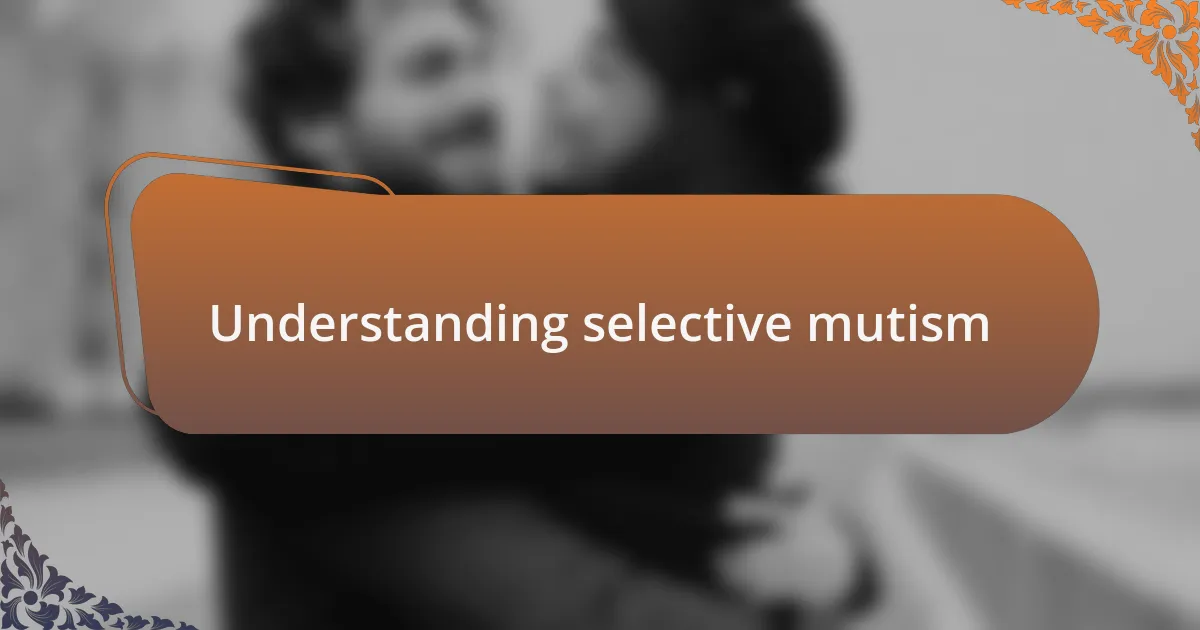
Understanding selective mutism
Selective mutism is often misunderstood, yet it’s a profound struggle that affects not just the ability to speak but also impacts social interaction and emotional wellbeing. I remember a moment when a child in my life remained silent at a family gathering, not out of defiance, but out of overwhelming anxiety. It made me wonder, what hidden fears are tied to those quiet moments?
This condition usually surfaces in early childhood, and it can feel incredibly isolating for both the individual and those around them. There were times when I thought about how the simple act of speaking could become a mountain to climb. It leads me to ask—how many unspoken thoughts and feelings are trapped within those who can’t find their voice?
Understanding selective mutism requires empathy and patience. It’s not about choosing to be mute; it’s a complex interplay of anxiety and the pressure of social situations. I often reflect on how these pressures can create a barrier that feels insurmountable to some, highlighting the need for supportive environments that encourage open expression.
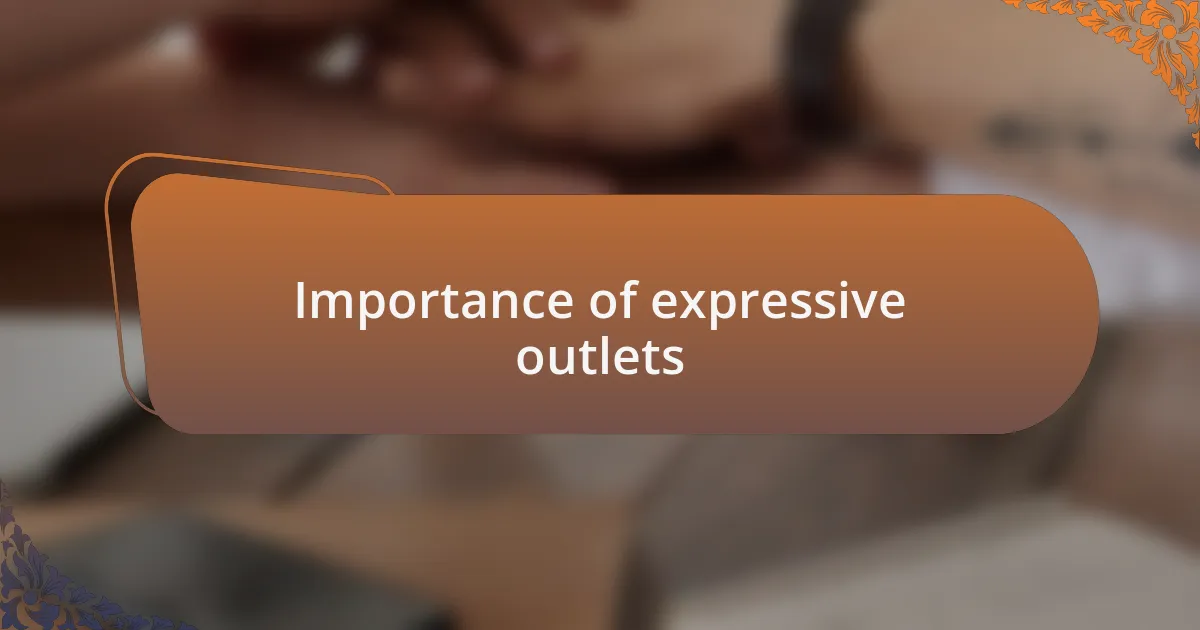
Importance of expressive outlets
Expressive outlets play a crucial role in emotional health, especially for those grappling with selective mutism. I recall when a friend shared their drawings as a means of expressing what they struggled to verbalize. It was a revelation for both of us, as art allowed them to channel emotions that felt trapped within, demonstrating how creative expression can be an invaluable bridge between thoughts and feelings.
Without these outlets, individuals may feel pressure to conform to social norms, often leading to heightened anxiety. I’ve observed that when people have the opportunity to express themselves through writing or art, it provides a safe space for them to articulate their fears and joys. Isn’t it fascinating how a simple pen on paper can evoke such clarity and release, helping to unburden the mind?
Engaging in expressive activities fosters a sense of control and understanding over one’s feelings. I remember the sense of relief I felt after writing in my journal during moments of frustration. That act of writing opened doors to deeper reflections, prompting me to ask: how can we better support those who struggle to express themselves? Creating these channels for expression not only validates their experience but also strengthens connections with others, nurturing a sense of community and understanding.
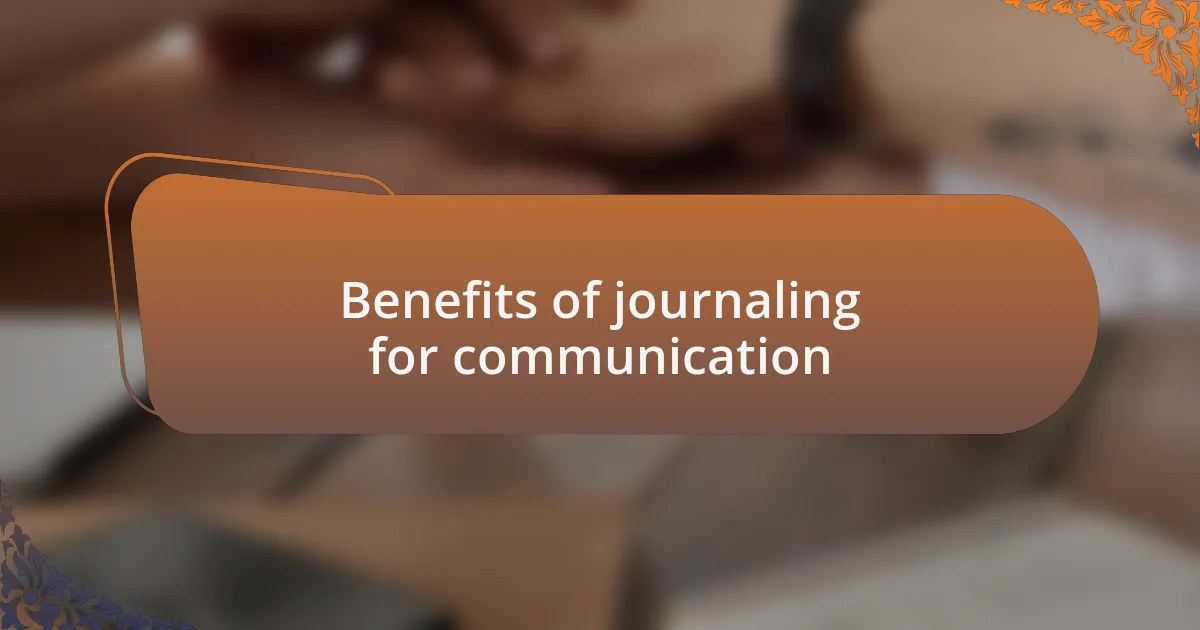
Benefits of journaling for communication
Journaling has a unique power when it comes to enhancing communication. I remember a time when I used my journal to process a difficult conversation that had left me feeling unsettled. Writing about it helped me articulate my thoughts and emotions more clearly, almost like finding the right words to express myself in real life. Isn’t it incredible how transferring feelings to paper can clarify our inner dialogues?
Another benefit I’ve found is that journaling serves as a non-threatening medium for self-discovery. In my experience, the act of putting pen to paper often reveals underlying emotions I didn’t even realize I was holding onto. For those struggling with selective mutism, this can be a vital step in understanding their feelings about communication and expressing themselves more comfortably.
Furthermore, journaling acts as a rehearsal space for future interactions. When I write down what I want to say in challenging situations, I often find myself feeling more confident and prepared. Think about it: How often do we wish we could communicate our thoughts as effortlessly as they come to mind? Journaling grants us that opportunity to practice and refine our voices, offering a sense of empowerment for anyone facing communication challenges.

Creating a journaling routine
Establishing a journaling routine can be truly transformative. I like to set aside a specific time each day—usually in the morning—when I can sit quietly and write without distractions. This consistency not only helps me clear my mind but also builds a habit that enables deeper reflection. Have you ever noticed how setting a ritual makes a task feel more meaningful?
I find that starting with a simple prompt can ease the pressure to produce profound insights right away. Sometimes, I just jot down three things I’m grateful for or a feeling that came up during the day. This approach helps ground my thoughts and sets the tone for more in-depth exploration later on. Does that sound like a manageable way to get started?
As I’ve continued this routine, I’ve discovered that my journal becomes a safe space, a confidant of sorts. Writing on tough days allows me to untangle complex emotions, helping me understand them better. The more I engage in this practice, the more I realize how important it is to carve out that time for myself—how does self-reflection fit into your own routine?

Techniques for effective journaling
When it comes to effective journaling, I’ve found that employing different formats can be incredibly freeing. For instance, mixing traditional writing with sketches or lists helps to express feelings in a way that words alone sometimes cannot capture. Have you ever felt that a simple image conveyed a deeper emotion than any sentence could? That’s what I love about integrating artistic elements into my journaling.
Another technique I use involves setting specific intentions before I start writing. I often ask myself what I hope to achieve from that session—whether it’s processing a challenging moment or celebrating a small victory. This clarity not only directs my writing but also enriches the entire experience. Doing this regularly makes me more attuned to my thoughts and feelings—have you ever noticed how a little focus can shift your perspective?
Lastly, embracing vulnerability in journaling has proven transformative for me. I often write about my anxieties and fears, letting them spill onto the page without judgment. This unfiltered approach helps me confront my emotions head-on, rather than letting them simmer beneath the surface. How might expressing your raw thoughts shift your understanding of yourself? I find that the more honest I am in my journal, the more I uncover layers of my identity.
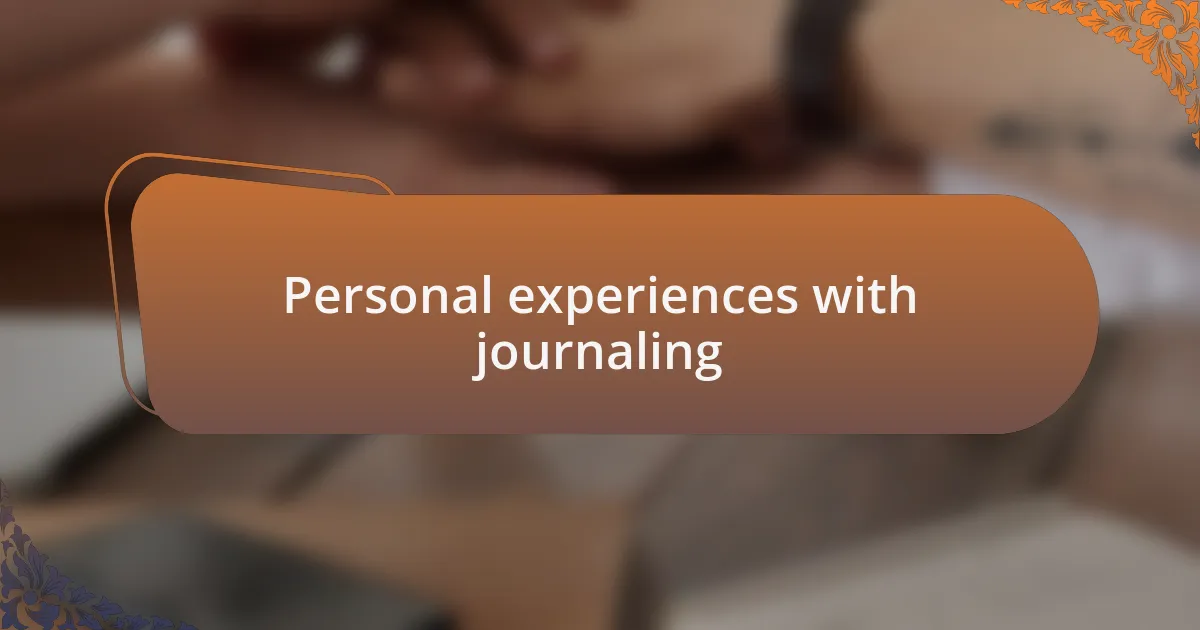
Personal experiences with journaling
There have been countless times when I sat down with my journal, feeling a whirlwind of emotions that I couldn’t quite articulate. One memorable entry comes to mind when I was grappling with a particularly challenging day filled with overwhelming silence. As I poured my heart out onto the pages, I found that writing about my discomfort not only lightened the emotional load but revealed thoughts I hadn’t fully recognized, like a release valve for my pent-up feelings.
I remember a period when I experimented with writing dialogues between my inner child and my current self. This practice helped me bridge the gap between my past experiences with selective mutism and my present emotions. Capturing this conversation in my journal opened my eyes to the deep-seated fears impacting my current life—have you ever had a breakthrough just because you chose to listen to your inner voice?
There are days when I struggle to put pen to paper, feeling the weight of my silence heavy on my mind. In those moments, I turn to free writing as a way to break through the barriers. Just by allowing my thoughts to flow without structure, I often discover insights that surprise me, as if my subconscious has been aching to share something important. Can you relate to that sense of liberation that comes from unfiltered expression? I’ve learned that even on tough days, journaling can serve as a steadfast companion, helping me navigate my emotions and embrace my journey.
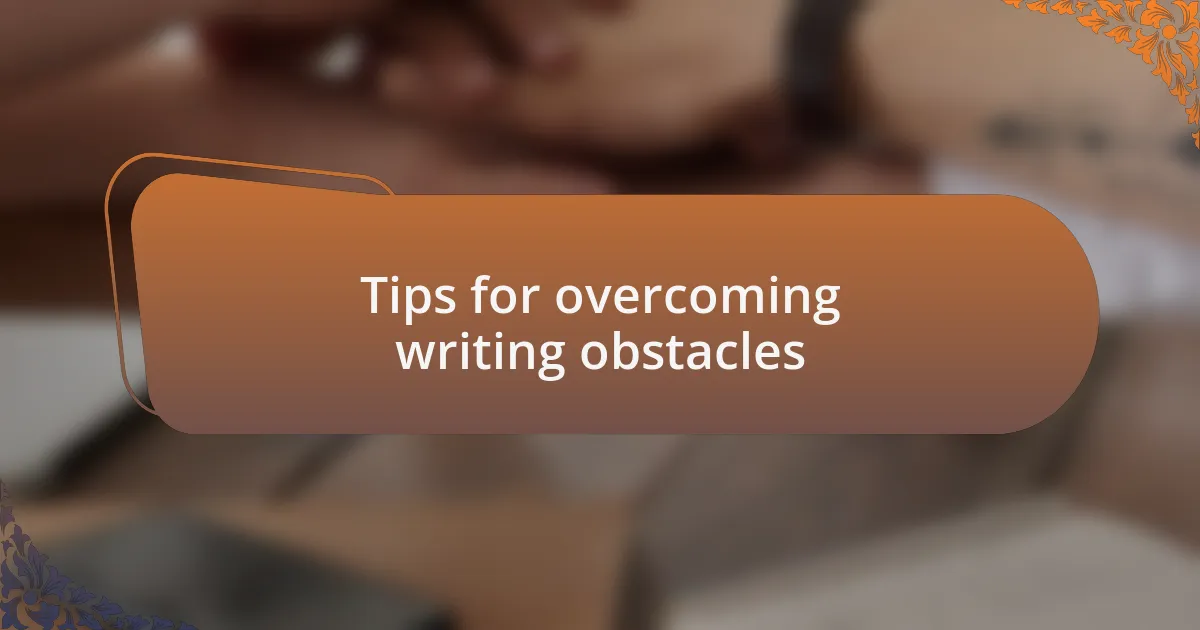
Tips for overcoming writing obstacles
Sometimes, I find myself staring at a blank page, paralyzed by the pressure to write something meaningful. In those moments, I remind myself that it’s perfectly okay to simply jot down a few words or phrases. I often start with bullet points or phrases that capture my emotional state; it’s a gentle nudge to get the creative juices flowing without the heaviness of crafting full sentences.
I remember once feeling stuck for days, unable to articulate my feelings after a particularly tough therapy session. Instead of pushing through that block, I decided to write just one sentence about my feelings. That single line became a foundation, leading me to explore a deeper narrative over the following days. Have you ever experienced how a small step can open the door to deeper reflections? It’s a reminder that overcoming obstacles doesn’t require grand gestures; sometimes, a few simple words can unlock a floodgate of expression.
Another technique I often use is setting a timer for five minutes. I challenge myself to write without stopping, even if I feel like I’m rambling. This time pressure creates a sense of urgency that often surprises me with the depth of thoughts that emerge. Have you tried this method? It transforms my writing session into a mini-adventure—who knows what unexpected insights might appear when I let go and just write?